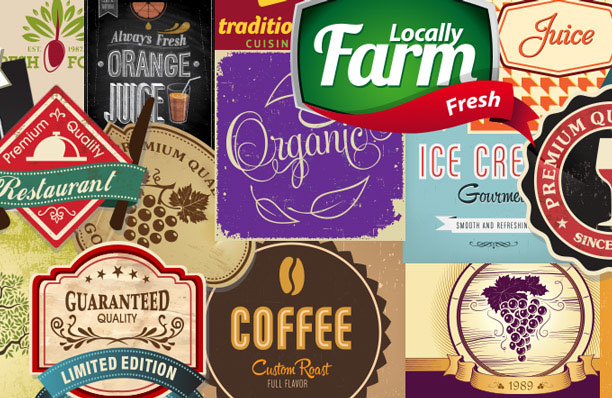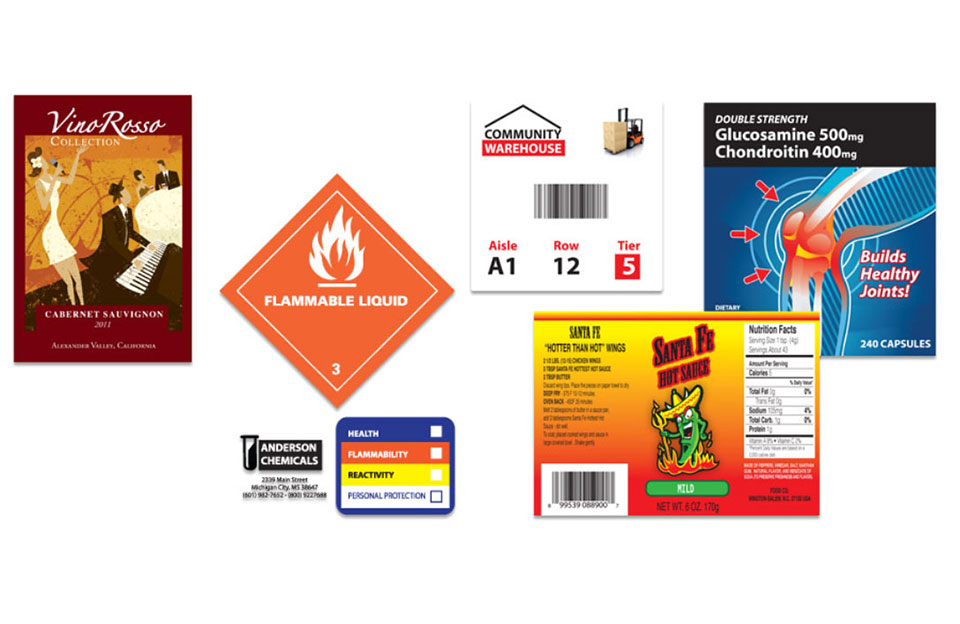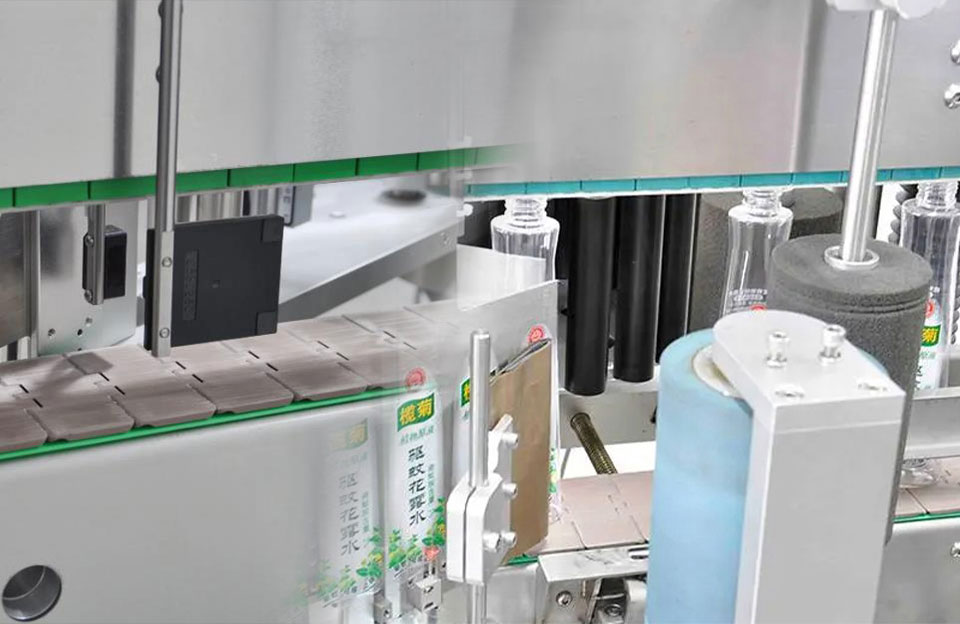Digital labels hold significant importance in various domains due to the rapid advancement of technology and the increasing reliance on digital platforms for communication, information sharing, and marketing. Digital labels enhance transparency and allow for better traceability throughout the supply chain, contributing to consumer trust and safety.
The Evolution and Innovation of Digital Labels
Technological advancements and changing needs of various industries drive the development and innovation of digital labels. Below is a timeline of key developments and innovations in the digital labeling space:
- Barcode Labels (1970s – 1980s): Barcodes revolutionized inventory management and retail operations, with traditional linear barcodes paving the way for automated data collection and faster checkout processes.
- QR Codes and Data Matrices (2000s): QR codes expand the information-carrying capabilities of tags, linking physical objects with digital content. Data Matrix codes support high-density encoding, which is critical for small products.
- Near Field Communication (NFC) (2010s): NFC tags allow contactless communication between physical objects and digital devices. This enables seamless interactions, such as clicking on a tag to get product information or make a payment.
- Smart Labels (2010s): Integrating sensors, microprocessors, and communication technologies into labels. Enables temperature monitoring, freshness indicators, and tamper-proof features.
- Augmented Reality (AR) Labels (2010s): AR-enabled labels blend physical and digital experiences. Scan tags with an AR app to bring interactive content, 3D models, or animations to life.
- Blockchain Labeling (2010s): Blockchain technology adds a layer of security and traceability to labels, which can ensure the integrity and authenticity verification of supply chain data.
- Electronic Shelf Labels (ESL) (2010s): ESLs replace traditional paper price tags in retail environments, allowing for dynamic price updates, promotions, and inventory management.
- Flexible and Printed Electronics (2010s): Printed electronics allow thin, flexible, disposable electronic labels. Enable sensors, batteries, and displays on flexible substrates.
- Dynamic Content and Personalization (2010s): Tags are beginning to incorporate dynamic elements such as e-ink displays, enabling real-time updates, personalized content, and time-sensitive information.
- Smart Packaging and Internet of Things (IoT) integration (2010s): Labels become part of a wider IoT ecosystem, connecting products to the Internet. Enable remote tracking, monitoring, and interaction with products.
- Artificial Intelligence and Machine Learning Integration (2010s): Labels began integrating artificial intelligence functions such as image recognition. Enable more advanced product interactions, such as recognizing and providing information about objects.
- Environmental Considerations (2010s – 2020s): Labels become more sustainable, focusing on reducing waste and using environmentally friendly materials. Digital watermarks and other subtle marks were developed for product authentication.
- 5G Connectivity (2020s): The rollout of 5G networks further enhances the capabilities of digital labels. Enable faster data transfer and real-time interaction, especially for AR and data-intensive applications.

Digital Labels
The future of digital labels is likely to be more integrated with emerging technologies such as wearables, advanced artificial intelligence, extended reality (XR), and further improvements in sustainability. As these technologies advance, digital labels will play a vital role in reshaping how products are labeled, marketed, and interacted with.
How to Integrate Digital Labels with Labeling Machines?
Integrating digital labels with labeling machines involves combining the capabilities of both technologies to create a streamlined and efficient labeling process. Here’s a step-by-step guide on how to achieve this integration:
- Understand Digital Labeling Technologies: Familiarize yourself with the various digital labeling technologies, such as QR codes, NFC, RFID, and electronic displays. Understand how these technologies work, their benefits, and their compatibility with the products and processes.
- Select the Right Labeling Machine: Choose a labeling machine that supports the digital label that needs to be integrated. Different labeling technologies might require specific types of machines or modifications to existing ones.
- Modify or Upgrade Labeling Machines (if necessary): Depending on the digital labeling technology chosen, the labeler may need to be modified or upgraded to accommodate new capabilities. This could involve adding sensors, readers, or mechanisms for applying digital labels.
- Data Management and Integration: Set up a data management system to generate and store digital label content. This could be product information, QR codes, NFC data, or other relevant details. Ensure that this system can communicate with the labeling machine’s control system.
- Design Digital Label Templates: Create on-brand templates for digital labels and provide relevant information to users. This might include QR codes with links to websites, NFC tags with interactive content, or displays showing dynamic information.
- Integrate Reading Mechanisms: For technologies like QR codes, NFC, or RFID, integrate reading mechanisms (scanners, NFC readers, RFID readers) into the labeling machine. These mechanisms will read the digital labels’ information and trigger appropriate actions.
- Sync Labeling and Application Process: Ensure the labeling machine’s application process synchronizes with the reading and data integration process. The machine should apply the digital labels accurately and at the right location on the product or packaging.
- Testing and Calibration: Thoroughly test the integrated system to ensure the digital labels are read accurately, and the application process is working as expected. Calibrate the system for optimal performance.
- Connectivity and Control: If the digital labels require real-time updates or interactions, ensure the labeling machine is connected to a network allowing data exchange. This could involve Wi-Fi, Bluetooth, or other communication protocols.
- Training and Maintenance: Train related staff on the operation and maintenance of the integrated system. Regularly update the software, firmware, and hardware components to ensure consistent performance.
- Quality Control and Monitoring: Implement quality control measures to ensure digital labels are applied correctly and function as intended. Monitor the performance of the labeling machine and the digital labels to address any issues promptly.
- Scale and Adapt: As the operations grow or new technologies emerge, be prepared to scale up the integration or adapt the system to accommodate changes.

Digital Smart Lables
How Digital Labeling and Labeling Machines Are Driving Sustainability
Digital labels and labeling machines contribute to sustainability by reducing waste, improving efficiency, and enabling more environmentally friendly processes in various industries. Here’s how these technologies are driving sustainability:
- Reduced Material Consumption: Digital labels eliminate the need for excessive paper, ink, and other physical materials used in traditional labels. This reduction in material consumption helps conserve natural resources and reduces the environmental impact of their production and disposal.
- Less Waste Generation: Traditional labeling methods often result in waste due to misprints, label changes, and overproduction. Digital labels allow for on-demand printing, reducing the chances of excess label waste and discarded products.
- Efficient Production: Digital labeling machines enable precise and consistent label application, minimizing errors that can lead to label reprints and wasted products. This efficiency reduces the consumption of resources required for redoing labeling tasks.
- Dynamic Information: Digital labels can provide real-time updates, such as ingredients, nutritional data, and expiration dates. This reduces the likelihood of products being discarded due to outdated information, contributing to food waste reduction.
- Eco-Friendly Materials: Some digital labeling technologies support the use of eco-friendly and recyclable materials, reducing the environmental impact of the labels themselves.
- Smart Packaging: Integrating digital labels with smart packaging technologies like RFID and NFC can enhance supply chain visibility, reducing the chances of product spoilage and waste through better inventory management.
- Minimal Chemical Usage: Traditional label printing processes involve inks, solvents, and chemicals. Digital labels often require fewer or no chemicals, reducing potential pollutants and the need for chemical disposal.
- Less Energy Consumption: Digital label printing and application processes can be more energy-efficient than traditional printing methods, which may involve heating, drying, and curing stages.
- Regulatory Compliance: Digital labels allow for swift updates to comply with changing regulations, reducing the risk of non-compliance fines and the waste associated with reprinting labels.
- Extended Product Life: Digital labels can enable interactive features such as recipes, usage tips, and promotions, enhancing user engagement and extending the lifespan of products.
- Remote Monitoring and Maintenance: Some digital labeling machines allow for remote monitoring and diagnostics, reducing the need for on-site visits and associated transportation-related emissions.
- Promotion of Sustainable Practices: Brands using digital labels can educate consumers about sustainable practices, responsible sourcing, and recycling, fostering a more environmentally conscious consumer base.
- Reduced Transportation Impact: Digital labels can minimize the need for shipping and storing large quantities of pre-printed labels, reducing the carbon footprint associated with transportation.
- Waste Tracking and Analytics: Digital label integration can facilitate data collection on waste generation and sustainability metrics, enabling companies to identify areas for improvement and make informed decisions.
Conclusion
Digital labels are vital in enhancing communication, consumer engagement, information sharing, and operational efficiency across various industries. They enable businesses to adapt to the digital age and provide value-added experiences to their customers.
Industries can achieve more efficient, accurate, and sustainable labeling processes by integrating digital labels with advanced labeling machines. These technologies collectively contribute to waste reduction, improved resource utilization, and enhanced environmental responsibility, aligning with the growing demand for sustainable business practices.


